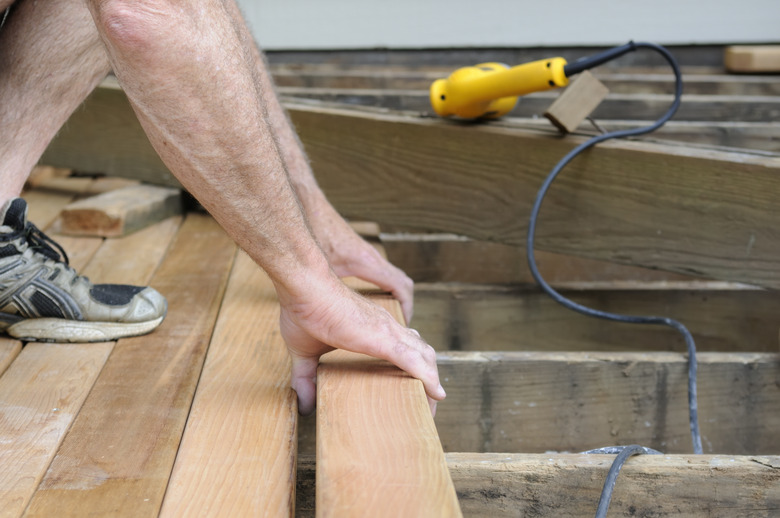Wood That Termites Will Not Eat
Whether it's your home's support beams, the trim around your windows, a porch, a deck, a fence, or a gazebo, you don't want termites eating and destroying the wood in and around your home. While there are many ways to deter and destroy termites, sometimes the best solution is to choose a wood that termites actively avoid. When it comes to finding wood that termites won't eat, look for pressure-treated wood and naturally termite-resistant woods, such as teak, redwood, cypress, and cedar.
Pressure-Treated Wood
Pressure-Treated Wood
To slow decay, some wood products are required to be pressure treated, which means preservatives, such as alkaline copper quaternary, copper azole, and micronized copper azole, are forced into the pores of the wood. The process creates stronger, longer-lasting wood that is resistant to fungi, rot, and termites. Because these all represent a serious threat to wood that makes contact with the soil, many building codes require the use of pressure-treated wood wherever the wood will be touching the ground or close to it.
Naturally Resistant Woods
Naturally Resistant Woods
Technically, termites can go through any wood, but just as there are some woods they prefer (pine is a favorite), there are some woods they avoid whenever possible, and a few may even kill them. In fact, a study by the Agricultural Research Service looked at what happened when a group of termites was only provided with one specific species of wood for six weeks. What they discovered was that redwood, Brazilian jatoba, Peruvian walnut, Honduran mahogany, Alaska yellow cedar, and teak all have some degree of natural resistance to termites.
Teak was the insects' least-preferred wood, and in fact, it is deadly to termites, evidenced by the fact that more termites died in the teak group than the group that ate absolutely nothing for six weeks. Interestingly, Peruvian walnut also had a high morality rate, with only 16.4 percent of the termites surviving the trial. However, the termites destroyed it at a rate similar to birch and red oak, which are both highly susceptible to termite damage, so while Peruvian walnut may not be great for their health, termites still find it quite palatable.
When purchasing termite-resistant wood, keep in mind that these materials tend to be more expensive than other woods and that they are not as long-lasting as pressure-treated wood.
Redwood Is the Most Practical
Redwood Is the Most Practical
When it comes to woods that are most commonly used for construction purposes, redwood is perhaps the best choice. It had the second-highest termite mortality rate behind teak. This may be because it is notably dense and has few pores, making it difficult for them to penetrate. These same qualities make it an excellent building material, as it is strong and resistant to decay from moisture, rot, and fungus.
Look for Heartwood
Look for Heartwood
Some types of hardwood, such as cypress and cedar, are resistant to termite damage when the heartwood from the center of the tree is used but not when the softwood near the outside of the tree is used. This is because the heartwood is the densest part of the tree, which makes it much more difficult for the termites to penetrate.
You can look for heartwood-grade lumber for your projects to reduce the likelihood that the wood will be damaged by termites, but expect to pay a premium for it. Cypress and cedar heartwood, in particular, are good choices when it comes to termite-resistant heartwood, as they both have smells that actively repel termites.
